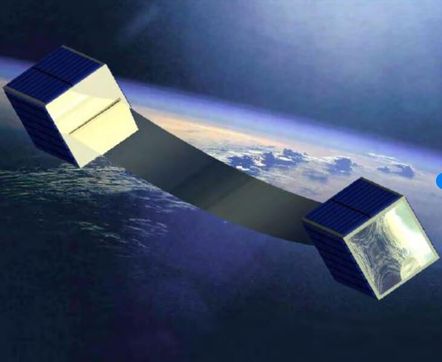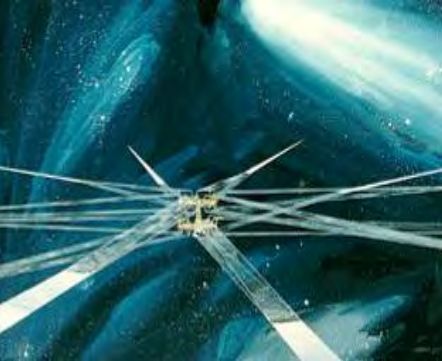Engineers launching the CubeSail satellite asking for the help of radio amateurs
On December 16, 2018, 13 cubes per NASA ELaNa program was launched on an ultralight Electron booster. Lozga wrote about this launch in the publication Two Success of Private Cosmonautics :

CubeSail is a demonstrator of technology from CU Aerospace, who wanted to demonstrate the viability of using solar sails as an engine for long-distance space flight. The satellite was built and managed by students at the University of Illinois at Urbana-Champaign through the student organization Satellite Development (SatDev).
CubeSail is a pair of satellites connected by a ribbon - a sail.

This is only part of the designed UltraSail satellite, which will have to have several such sails, one end attached to the central part, and the other to the subsatellite, which turns the sail to the required angle.
')

Therefore, it is important to know what happened to CubeSail. One of the engineers at CubeSail placed a call for help to radio amateurs on Reddit.
Presumably, the CubeSail batteries are too low to turn on the satellite, but it has an emergency beacon at a frequency of 437.305 MHz, which is turned on once per hour and transmits a telemetry packet. CubeSail engineers have only one receiving station that can receive a signal from a satellite while it is above the horizon. Those. in the "window" in the range of up to 10-15 minutes.
The likelihood that it is at this moment that the beacon sends the telemetry is very small. Therefore, they call on radio amateurs, such as R4UAB , to assist in the reception of telemetry from the satellite. To decrypt it is proposed to use this script . They are also trying to accept telemetry using the SatNOGS amateur network.
It is curious that on the NASA website in the nineteenth mission, 10 satellites are listed, and 13 went on the flight, but for nanosatellite trivia, this is normal. The main thing is that illegal devices do not leak (there was already a precedent in the spring). Known total mass of the payload - 78 kg. And the most interesting are CubeSail (two cubsats deployed with a solar sail 250 m long) and RSat-P (a prototype of a repairman with two manipulators printed on a 3D printer). As in previous missions, the satellites are launched into a circular polar orbit with an altitude of 500 km.Immediately it became known that the satellite CubeSail does not communicate.

CubeSail is a demonstrator of technology from CU Aerospace, who wanted to demonstrate the viability of using solar sails as an engine for long-distance space flight. The satellite was built and managed by students at the University of Illinois at Urbana-Champaign through the student organization Satellite Development (SatDev).
CubeSail is a pair of satellites connected by a ribbon - a sail.

This is only part of the designed UltraSail satellite, which will have to have several such sails, one end attached to the central part, and the other to the subsatellite, which turns the sail to the required angle.
')

Therefore, it is important to know what happened to CubeSail. One of the engineers at CubeSail placed a call for help to radio amateurs on Reddit.
Presumably, the CubeSail batteries are too low to turn on the satellite, but it has an emergency beacon at a frequency of 437.305 MHz, which is turned on once per hour and transmits a telemetry packet. CubeSail engineers have only one receiving station that can receive a signal from a satellite while it is above the horizon. Those. in the "window" in the range of up to 10-15 minutes.
The likelihood that it is at this moment that the beacon sends the telemetry is very small. Therefore, they call on radio amateurs, such as R4UAB , to assist in the reception of telemetry from the satellite. To decrypt it is proposed to use this script . They are also trying to accept telemetry using the SatNOGS amateur network.
Source: https://habr.com/ru/post/364609/
All Articles